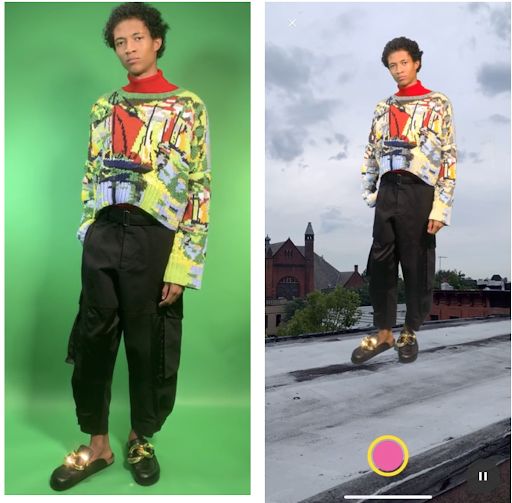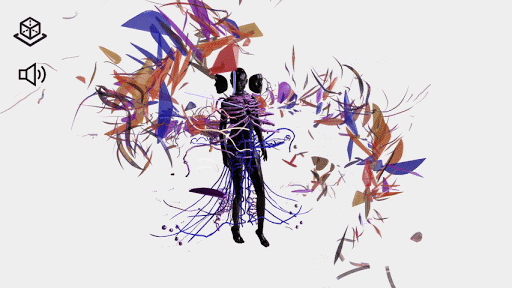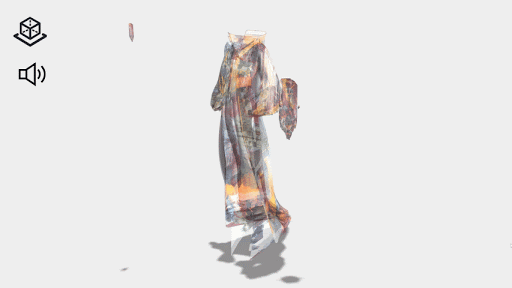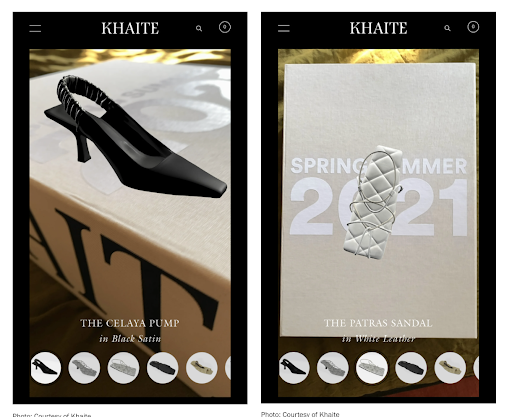The fashion industry is shifting towards significant digital transformation. From 3D design to the digital showcasing of fashion collections, the digitalisation of physical garments demonstrates key areas of rapid expansion, as well as offering hope and opportunity to an industry in flux.
The complex, global supply chain ground to a halt during the height of the coronavirus pandemic and remains sluggish as it steadily reopens. In the midst of physical lockdowns, shrinking economies and cancelled fashion week shows, the desire for fashion brands to engage consumers and, ultimately, sell their products, intensifies. But with all the physical and fiscal challenges, the question is: how?
Agile and progressive brands have turned to 3D and extended reality (aka XR, which includes VR and AR) to create and promote their products and gain an edge over the competition. The value of utilising 3D digital assets in AR experiences has been demonstrated by a number of brands, including Nike and Gucci (who both created AR apps for sneaker fit and Tryon) and JW Anderson, who partnered with HoloMe on an AR fashion presentation earlier this year.
The Spring 2021 collection was captured using a green screen and computer vision in order to insert them, via a smartphone app, into the user’s immediate environment. The app hosted live feeds for wholesale buyers to visualise the collection in their own environment, from which they were able to make decisions on which garments to order for retail―a critical solution in the face of physical travel restrictions and social distancing. Add to this Shopify’s integration of 3D and AR tools, which it claimc “have been shown to increase conversion rates by up to 250% on product pages,” and the benefits of 3D and AR for the fashion industry are clear.

Pushing this extended reality concept further, the recent Fabric of Reality VR fashion show brought together emerging fashion designers and VR artists to take part in a show that was live-streamed to a global audience of over 100,000 people. The project was the brainchild of RYOT (Verizon Media’s award-winning content studio and innovation lab) and the Fashion Innovation Agency at London College of Fashion and has been covered extensively on HuffPost UK.
During London Fashion Week, the VR show has now taken on a new incarnation, with the garments of the three fashion designers, Charli Cohen, Damara Ingles and Sabinna Rachimova, being ‘teleported’ out of the VR realm and into WebAR. This demonstrates the potential for fashion brands to not only create designs digitally and present them virtually (with all the time, waste and cost savings it affords), but also share them to global audiences to experience in their immediate location in augmented reality, and share on social media.
Click on the links below to be taken into a 3D AR experience, and hit the “Sound On” button on the top right corner to hear the designers talk about their garments.



Fashion week is a pivotal time for brands to raise awareness, engage consumers and drive sales, however, this is proving challenging for many as traditional catwalk shows have been replaced with digital ones, which Business of Fashion declared earlier this year “a flop, at least on social media”. It reported that London Fashion Week in June, which features menswear, saw social media engagement plunge 55 per cent from January, according to data analytics and software provider, Launchmetrics. Given that social media is fundamental to brand awareness and sales, this appears to raise major concerns over the effectiveness of digital fashion shows.
However, on review, the most common types of digital shows were 2D videos―many were traditional catwalks (filmed behind closed doors)― which may explain why they fell flat with digital-native audiences who are used to highly creative digital content, and stalwart fashion week insiders used to front row benefits and physical fanfare.
Considering the digital tools readily available to the industry – including 3D design, augmented and virtual reality, virtual catwalk models, animation and 3D gaming environments – it’s fortunate that the fashion industry has far richer technical toolkits to plunder before declaring digital fashion shows inferior. This season, some brands have begun exploring these tools to engage fashion week audiences, including ‘brand of the moment’ Khaite, who this week released their SS2021 shoe collection via WebAR.

In terms of generating engagement and lasting impact, research shared by Gorilla In The Room, an agency testing consumer responses to AR and VR indicates that VR experiences impact implicit memory, causing heightened emotional responses as if the person is experiencing something from a first-person perspective. Due to the feeling of presence in the VR environment, episodic memories (autobiographical in nature) are created in favour of semantic (general factual) memories, which can amplify retention of what is experienced. In essence, VR has been proven to be a powerful tool to connect people to the stories behind products in a way that gives them deeper meaning and value. This cuts straight to the core of what brands seek to achieve in building affinity and loyalty with their target audience.
In a similar manner, AR places the brand’s product into the world of the viewer, allowing them to create new content that is personal and unique to them. Designer Damara Ingles articulated the importance of this when saying: “Extended Reality opens a whole new dimension of fashion possibilities and future dreaming, allowing us to expand the wearable vocabulary in ways that become inclusive of our digital identities.” As digital-native Gen-Z inhabit online realms as a natural extension of their physical lives, it seems that VR and AR will be crucial to engaging this cohort – both emotionally and commercially.
An important catalyst for brands’ increased adoption of VR and AR experiences will be the expansion of 5G networks, which will facilitate blisteringly-fast streaming, content creation and sharing. Moin Roberts-Islam, Technology Development Manager at the Fashion Innovation Agency at London College of Fashion says that this expansion promises to not only allow vast and rapid data transfer in technical terms but a drastic reduction in latency for users, allowing truly interactive shared but unique-to-user AR and VR experiences. With the computation being done by powerful machines located remotely, the device, be it a smartphone, tablet or a headset, serves as simply the object of delivery, rather than a limiting factor.
At the same time as this technological leap, and accelerated by physical limitations brought about by Covid-19, brands are swapping 2D for 3D design and photogrammetry with widespread digitisation of products in the early stages of conception. This is creating a ‘perfect storm’ of digital assets that are virtual and augmented reality-ready. Utilising these digital products will help facilitate not only end-to-end digital supply chains from design to retail, but also with marketing, promotion and sales.
The sustainability gains, cost reductions and enhanced branding and marketing opportunities shouldn’t be underestimated. Stylus trends intelligence agency declared in their recent 5G retail futures report that “5G will enable a technological revolution, realising a ‘phygital’ world in which our physical experiences will be intertwined with digital layers, including seamless upgrades of AR uniting real life with imagined brandscapes.”
The fashion industry may be facing unprecedented challenges, but digital transformation coupled with 5G rollouts and extended reality tools offers unprecedented creative and commercial opportunities.